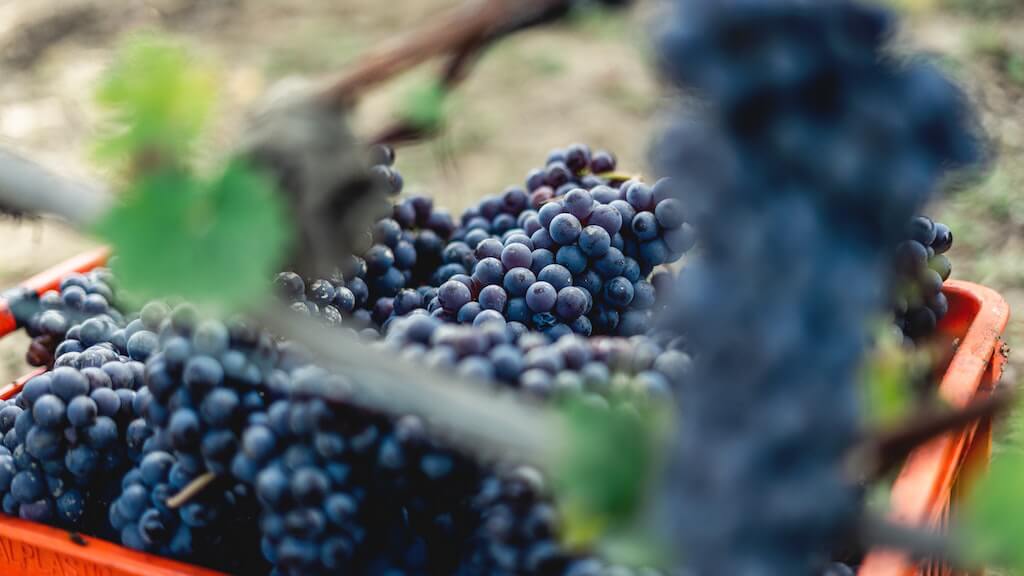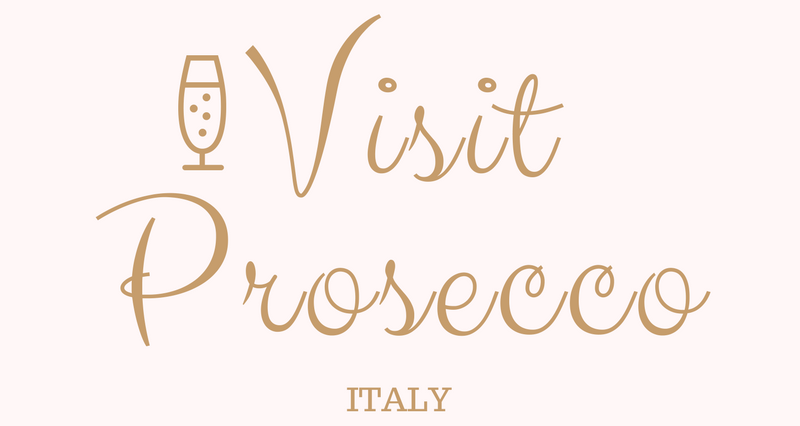Last Updated on July 29, 2022 by Jo Fitzsimons
Did you know that Italy produces more types of wine than any other country in the world, with approximately 350 official Italian wine varieties? From the types of grapes used to the production method and how long the wine is aged, each Italian wine is completely unique and has its own exciting flavour profile. Whether you enjoy sparkling, red wine or white wine, dry or sweet, full-bodied or light-bodied, there’s an Italian wine for everyone. But navigating the complex world of Italian wines can be rather intimidating. Below are 10 of the best and most popular Italian wine types to get you started.
1. Prosecco

Type: Sparkling wine. Region: Veneto. Grapes: Glera.
Probably one of the best known Italian wines, Prosecco is an affordable sparkling wine that has gained global recognition and has become a popular alternative to Champagne. As with all wines, there are various degrees of quality of Prosecco with the DOC (good) and DOCG (best) Prosecco originating from Italy’s Veneto and Friuli Venezia Giulia regions in the north. Just an hour away from Venice, it’s easy for taking a wine tasting tour if you’re visiting the city.
Prosecco must be produced using 85% Glera grape and is made using the ‘Charmat method’ (or tank method), where the second fermentation happens in tanks. With delicate bubbles and subtle fruity and floral notes, Prosecco can be enjoyed on its own, or mixed to create some of the most well-known Italian cocktails, including Aperol Spritz and Bellini. It’s a great drink to have as a pre-dinner aperitif but, more than that, it can actually accompany every course of your meal if you choose the right food and Prosecco. Find out more in our Prosecco and Food Pairing Guide. And find out more about Prosecco in our guide to What is Prosecco?
2. Franciacorta
Type: Sparkling wine. Region: Lombardy. Grapes: Chardonnay, Pinot Nero, and Pinot Bianco.
Franciacorta DOGC is another popular Italian sparkling wine, originating from the Providence of Brescia in the Lombardy region. While not quite as well known outside of Italy as Prosecco, Franciacorta has gained more international recognition in recent years.
Known as ‘Italian Champagne’, Franciacorta is made from Chardonnay, Pinot Noir and Pinot Blanc grapes – also used in Champagne – and is produced using the ‘traditional method’ (or Method Champenoise), where the second fermentation happens in the bottle.
Franciacorta is generally drier than Prosecco but not quite as acidic as Champagne. This quality sparkling wine has a rich and elegant taste, with notes of light citrus and dried fruits, as well as yeast and toasty brioche flavours which come from its fermentation process. It pairs well with white meats, fish and raw seafood, and soft-ripened cheeses like brie. Like cheese? Check out our guide to 14 Types of Italian Cheeses Everyone Must Know and Parmesan Cheese and Its Italian Alternatives.
3. Barolo

Type: Red wine. Region: Piedmont. Grapes: Nebbiolo.
Also originating from northern Italy, this time in the Piedmont region, Barolo is universally known as one of the country’s finest and most popular red wines.
Barolo is a DOGC wine, guaranteeing the highest levels of production and superior quality. It is made from the grape variety Nebbiolo. The black Nebbiolo grape is so tannin-packed that the wine has to age for at least 3 years, 18 months of which must take place in oak or chestnut barrels, to be smooth enough to drink.
The result is a rich and complex full-bodied Italian red wine with signature “rose and tar” aromas and notes of truffle, chocolate, dried fruit, and herbs. Delicious when paired with red meats and strong cheeses.
Similar Italian wine types that also use the Nebbiolo grape are Barbaresco DOGC, Gattinara DOCG and Langhe Nebbiolo DOC.
4. Chianti
Type: Red wine. Region: Tuscany. Grapes: Sangiovese.
If you’ve ever visited the Tuscany region, there’s a good chance that you’ve already heard of Chianti. Chianti is the largest wine-producing region in all of Italy and was one of the world’s earliest legally defined wine-making zones.
Chianti is a dry, red wine made predominantly with the Sangiovese grape, which is native to the region. It’s a high-acidity red wine distinguished by its aromas of cherry, plum, almond, violet, wood, and spices. This popular Italian wine makes a delicious accompaniment to rich tomato-based dishes such as Pasta al Pomodoro or pizza.
The Chianti DOCG denomination is used across the Chianti wine-growing region. However, Chianti Classico DOCG comes from a smaller mountainous region between Florence and Siena and is known to offer a more consistent taste and quality.
5. Primitivo
Type: Red wine. Region: Puglia. Grapes: Primitivo.
Primitivo is another popular Italian red wine, produced in the country’s southern Puglia region. Primitivo is generally more accessible and affordable than many other Italian red wines.
The name Primitivo translates roughly to “early one” due to the grape’s early ripening. Born from ripe black grapes with deep tannins, but holding a hint of sweetness, Primitivo can take a few sips to get used to if you’re used to very dry red wines. It’s bold, full-bodied and high in alcohol, with blueberry, blackcurrant and liquorice notes, and undertones of sweet tobacco and cinnamon.
The Salento IGT winemaking area stretches over the provinces of Brindisi, Lecce and Taranto in Puglia and accounts for the largest volume of wine produced in the region, many of which are quality Primitivo wines. Primitivo di Manduria DOC is the most prestigious area for the production of this wine. Primitivo di Manduria Dolce Naturale DOCG is an Italian sweet red wine made from late-harvest Primitivo grapes dried on the vines. It is the rarest type of Primitivo.
If you’re looking for a comparator, there’s a huge debate about whether Italian Primitivo and American Zinfandel are the same grape. Recent DNA research has shown that the two grapes were once the same variety.
6. Amarone della Valpolicella
Type: Red wine. Region: Veneto. Grapes: Corvina, Molinara and Rondinella.
Amarone della Valpolicella DOCG is one of the most prestigious red wines from northern Italy’s Veneto region.
This type of red wine is made predominantly from Corvina, Corvinone and Rondinella grapes. The grapes are partially dried (a method known as appassimento) before being slowly pressed, fermented and aged in oak wood barrels for several years. The grape drying method removes water and concentrates sugar, creating a highly complex, full-bodied wine.
Amarone has bold aromas of black cherry, plum, wild berries, carob, cinnamon, and dark chocolate. Some older wines also develop flavours of brown sugar and fig.
Make sure not to mix up Amarone della Valpolicella with Recioto della Valpolicella, an Italian sweet red wine made from dried passito grapes in the same region. Amarone is a much drier red wine with a slight bitterness.
7. Pinot Grigio

Type: White wine. Region: Veneto, Friuli-Venezia Giulia and Trentino-Alto Adige. Grapes: Pinot Grigio.
Pinot Grigio is one of the most popular Italian white wines around the world. It is widely grown and produced all over Italy, but the most common production areas can be found in the northeastern regions of Veneto, Friuli-Venezia Giulia and Trentino-Alto Adige.
Pinot Grigio is a light-bodied, delicate and refreshing white wine, with fruity aromas of grapefruit, lime, melon, apple and pear. The Italian dry white wine is best paired with shellfish, vegetables, salads and light pasta dishes.
There are countless different denominations of Italian Pinot Grigio – far too many to list here – but some that we’d recommend trying are Alto Adige DOC, Venezia DOC and Collio DOC.
8. Soave
Type: White wine. Region: Veneto. Grapes: Garganega.
Another of the most popular Italian white wine types is Soave, a DOC wine made from Garganega grapes grown in hillside vineyards surrounding the romantic city of Verona.
Soave is a dry and crisp white wine with fruity and floral notes. Typical flavours include melon, white peach, orange zest and jasmine, with subtle notes of almond and dried herbs. Its high natural acidity makes Soave one of the best Italian wines to pair with many different foods, including shellfish, pork, chicken, cured meats, risottos, vegetables and spicy Asian dishes.
The Soave DOC wine-growing area has grown massively over its history. This led to the creation of Soave Superiore DOCG to distinguish the highest quality white wines from the region. You’ll also find Soave Classico, which refers to wines produced in the original hillside vineyards. Lastly, Recioto di Soave DOCG is a sweet Italian wine also produced in the region.
9. Fiano di Avellino
Type: White wine. Region: Campania. Grapes: Fiano.
Fiano di Avellino DOCG is a high-quality Italian white wine from the Avellino province of Campania. The region’s close proximity to the Apennine Mountains, with a mild microclimate and mineral-rich, volcanic soils, is perfect for producing big and complex high-tannin wines.
Fino di Avellino DOCG is unusually full-bodied for white wine and has a bold aromatic fragrance. Tasting notes include white flowers, peach, apricot, and honey, combined with subtle flavours of dried herbs and nuts. Fiano’s high acidity and minerality make it ideal when drunk alongside fish and seafood dishes.
This southern Italian white wine is also well-known for its capacity to age well. Most Finos need 3-5 years to reach their full aromatic potential, but some of the highest-quality wines can be left for up to 10 years.
10. Cortese di Gavi
Type: White wine. Region: Piedmont. Grapes: Cortese.
Cortese di Gavi, known simply as Gavi, is the most famous and prestigious white wine DOCG from the Piedmont region in northern Italy. It is produced from the indigenous white grape variety Cortese.
Gavi is a crisp and refreshing bone-dry white wine, due to the mineral-rich soils of the area. It has flavours of green apples, lime, honeydew and chamomile, with light aromas of almond and straw.
Gavi DOCG wines are produced in several areas of the province of Alessandria. If you notice ‘Gavi de Gavi’ on the label, it simply means that the particular wine was produced around the town of Gavi. It’s not necessarily an indication of its standard.
That’s our guide to 10 types of Italian wines to try. Got any questions? Leave a comment below.
Related Articles:
- 12 Prosecco Cocktails To Make At Home
- Classic Aperol Spritz Recipe (& Some Variations)
- Classic Negroni Recipe & 5 Twists on the Original
- Ultimate Prosecco Food and Wine Pairing Guide
- 25 Prosecco Gifts (You’ll Want To Keep For Yourself)
- What is Prosecco & Everything You Want To Know About Your Favourite Drink
- How to Buy Good Prosecco
- There’s a Prosecco Vending Machine in Italy & Here’s How To Visit
- 14 Types of Italian Cheese Everyone Needs To Know
- Prosecco vs Champagne: What’s The Difference?
- 14 Famous Italian Drinks To Try In Italy (Or At Home)
- There’s a Prosecco Vending Machine in Italy – Here’s How To Visit

This information is so helpful because I want to take my boyfriend to a romantic winery hotel. It’s our 5th anniversary next month and I just feel like doing something new with him for a change.
Congratulations. I can highly recommend the Prosecco region as a great place for your anniversary. Have a great trip.